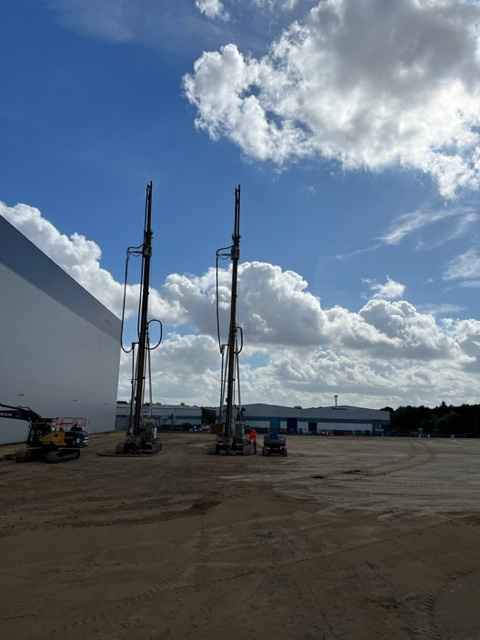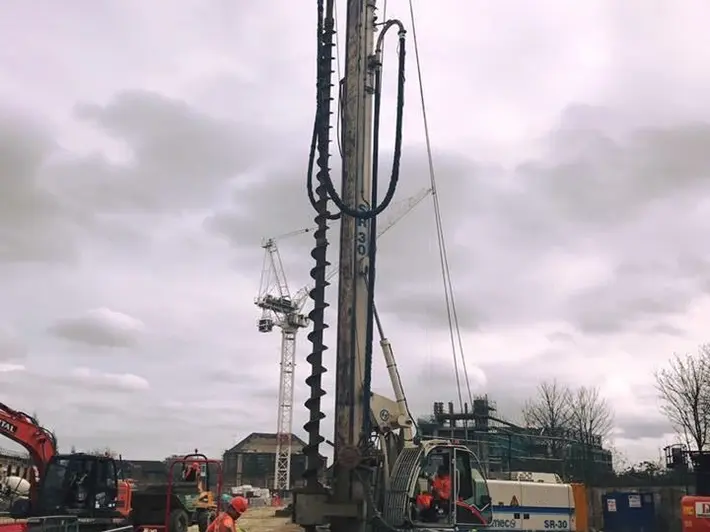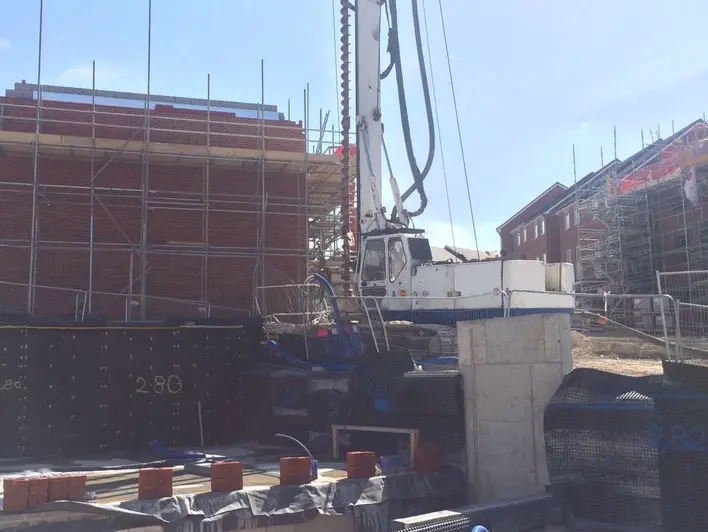Pile Foundation Types and Their Construction Methods

If you have ever been involved in a construction project, you might have heard the term ‘Pile’. However, unaware of the jargon used in the construction industry, you might not have been able to tell what it means. Piling is a very old method of construction that is still in use today. Let’s understand what is Piling and what significance it carries in the construction of buildings, bridges, and other structures.
What Is a Pile?
A Pile is a long, thin element composed of any material, whether steel, concrete or even timber in some cases. It provides support to the structure that stands above it. Piles allow structures to be built on soil that would otherwise not support that piece of construction. A series of Piles are connected to form a Pile Foundation.
What Is a Pile Foundation?
As already discussed, the collection of Piles that a construction will be standing on, all combine to form a Pile Foundation. Pile Foundations tend to vary from one structure to another since every such foundation may have a different purpose to serve. However, before we discuss the different forms and variations of Pile Foundations, we must first understand their significance and the situations in which they are needed.
Mon–Fri: 8:00am-6:00pm
Skilled Labour
Customer Satisfaction
Advanced Machines
When Are Pile Foundations Used?
There are several situations that call for the use of Pile Foundations. We discuss those situations below:
- When the water table in the ground is too high
- The superstructure being constructed has immense and non-uniform weight
- Alternate foundation types are non-feasible, either financially or technically
- When the soil at shallow depth is compressible and not compact
- When the probability of scouring is high, which might be due to close proximity to a riverbed or seashore
- The presence of a canal or a deep drainage system near the construction site
- Poor soil condition does not allow for the desired soil excavation depth
- When keeping the foundation trenches of a structure dry becomes uneconomical or impossible through means such as pumping out water
History of Pile Foundations
There lies sufficient evidence regarding the use of Piles in ancient civilisations. Although there remain proofs that predate even the Ancient Romans, we know for certain that Timber Piles were displaced in river beds to make bridges in Britain. Earlier civilisations built Pile Foundations for their houses, and communities dwelling on lakes had houses elevated with Piles to safeguard the structures from flooding and attacks. Therefore, Piles and Pile Foundations have been utilised for thousands of years to date, although there might have been significant changes to their types and uses.


Types of Pile Foundations and Their Construction
There are multiple classifications of Pile Foundations based on their size, use and effect on soil. We discuss all of them and how they are distinguished from one another.
Pile Foundations Distinguished by Size
Pile Foundations can be categorised as being either shallow or deep. Shallow Pile Foundations are used when the weight of the structure does not exceed the bearing capacity of the soil. Alternately, Deep Pile Foundations are used at sites where the load of the structure much exceeds the bearing capacity of the soil, necessitating the use of the Pile Structure.
Pile Foundations Distinguished by Use
When categorising Piles by use, two main categories emerge. These are End-bearing Piles and Friction Piles. End-bearing piles are those that rest on a layer of rock or soil that is tightly compressed and compact. Therefore, the load of the structure is transferred to this layer of soil or rock, lending a firm standing surface to the structure above.
Friction Piles, in contrast, are those which transfer the load to the soil across their entire length, allowing rigidity and stability to the structure under construction.
Pile Foundations Distinguished by Effect on Soil
When distinguishing between the various Pile Foundations by effect on soil, we see there are two main categories: Driven Piles and Bored Piles. There is also a third category, which is a combination of driven piles and bored piles known as Franki piles.
Driven Piles
In the case of Driven Piles, the Piles are usually pre-fabricated off-site, brought to the site when needed, and displaced into the soil, compacting the soil across them. This makes them a good application of Friction Piles as the load of the structure atop is evenly distributed across their length onto compact soil. This is a desirable Pile Foundation variant as it is quicker to initiate and also more cost-effective.
Bored Piles
In the case of Bored Piles, holes are excavated into the soil and steel reinforcement cages are placed into these holes. Finally, concrete is poured inside to form the Pile Foundation. This form of End-bearing Piles is most beneficial when other buildings surround the construction site since it does not cause vibration in the soil, as opposed to Driven Piles. Furthermore, this will be the choice of Pile Foundation when there are variations in individual Pile lengths and when the bearing capacity of the soil is higher.
Franki Piles
As already mentioned, there is a third type of Pile Foundation, which is a mix of Driven and Bored Piles. To form this Pile Foundation, a shell of the same diameter as the pile is driven into the soil and concrete is poured inside it. This type attempts to benefit from the advantages of both Pile Foundations.
Wrapping It Up!
Pile Foundations are a significant element of construction and also hold historical importance. Knowing about them is not only crucial for construction professionals, but also for the ordinary laymam. After all, what is there to lose when acquiring knowledge?
Alpha Piling Ltd is an Essex-based contractor mainly focused on piling, providing its services nationwide. If you are in need for piling services, be sure to contact us.
